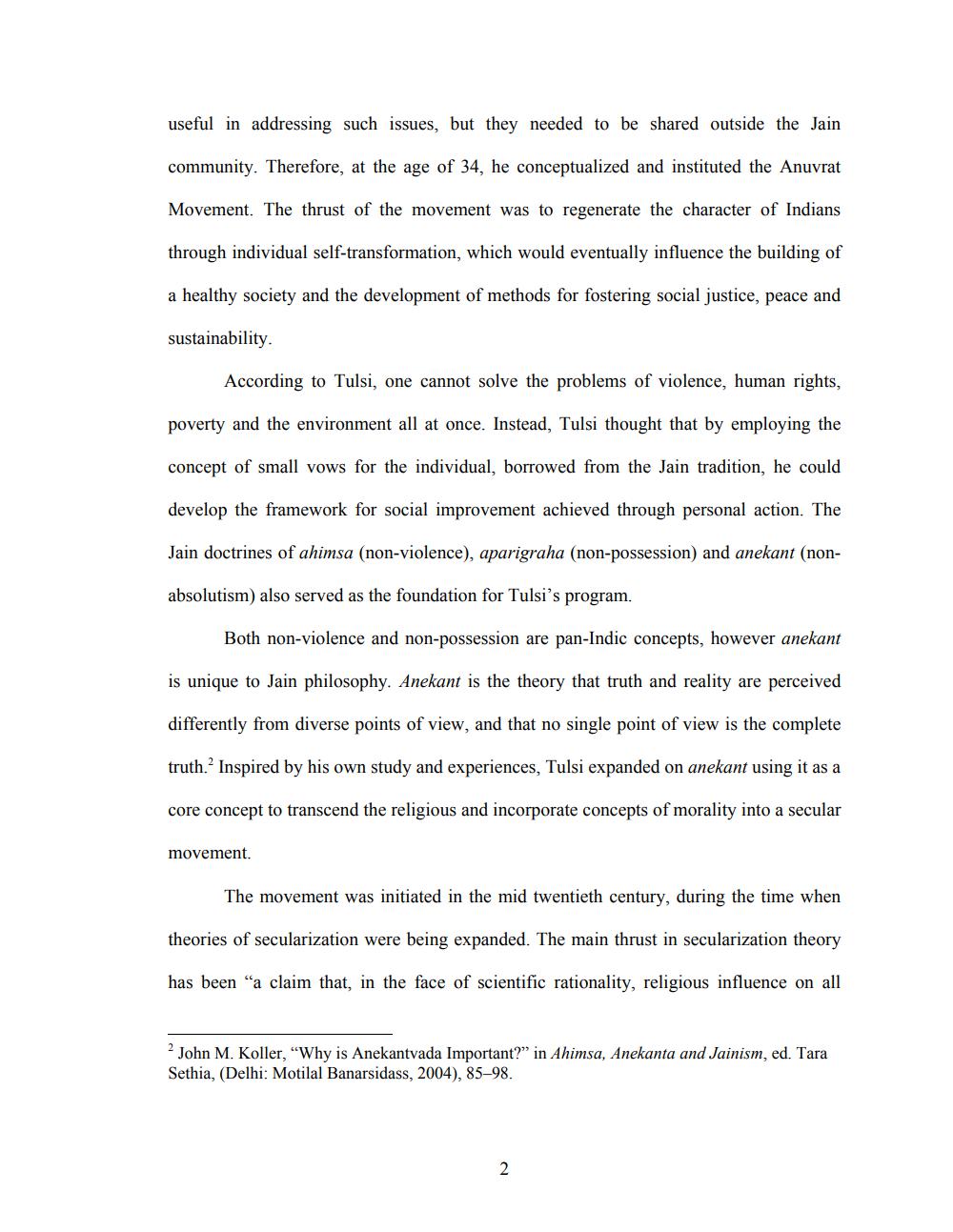________________
useful in addressing such issues, but they needed to be shared outside the Jain
community. Therefore, at the age of 34, he conceptualized and instituted the Anuvrat
Movement. The thrust of the movement was to regenerate the character of Indians
through individual self-transformation, which would eventually influence the building of
a healthy society and the development of methods for fostering social justice, peace and
sustainability.
According to Tulsi, one cannot solve the problems of violence, human rights,
poverty and the environment all at once. Instead, Tulsi thought that by employing the
concept of small vows for the individual, borrowed from the Jain tradition, he could
develop the framework for social improvement achieved through personal action. The
Jain doctrines of ahimsa (non-violence), aparigraha (non-possession) and anekant (non
absolutism) also served as the foundation for Tulsi's program.
Both non-violence and non-possession are pan-Indic concepts, however anekant
is unique to Jain philosophy. Anekant is the theory that truth and reality are perceived
differently from diverse points of view, and that no single point of view is the complete
truth. Inspired by his own study and experiences, Tulsi expanded on anekant using it as a
core concept to transcend the religious and incorporate concepts of morality into a secular
movement.
The movement was initiated in the mid twentieth century, during the time when
theories of secularization were being expanded. The main thrust in secularization theory
has been "a claim that, in the face of scientific rationality, religious influence on all
2 John M. Koller, "Why is Anekantvada Important?" in Ahimsa, Anekanta and Jainism, ed. Tara Sethia, (Delhi: Motilal Banarsidass, 2004), 85–98.
2




